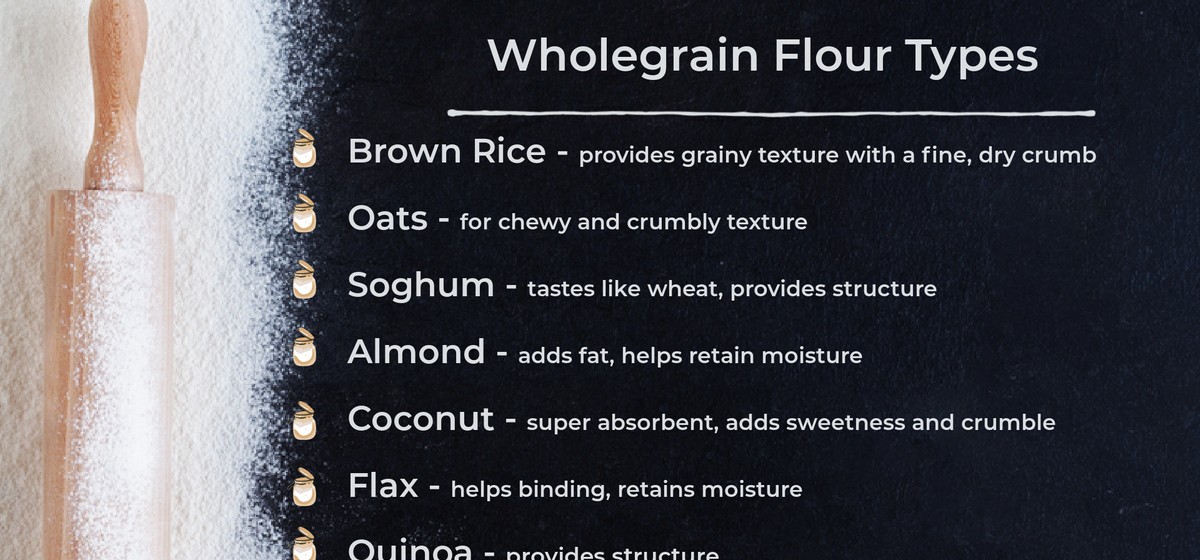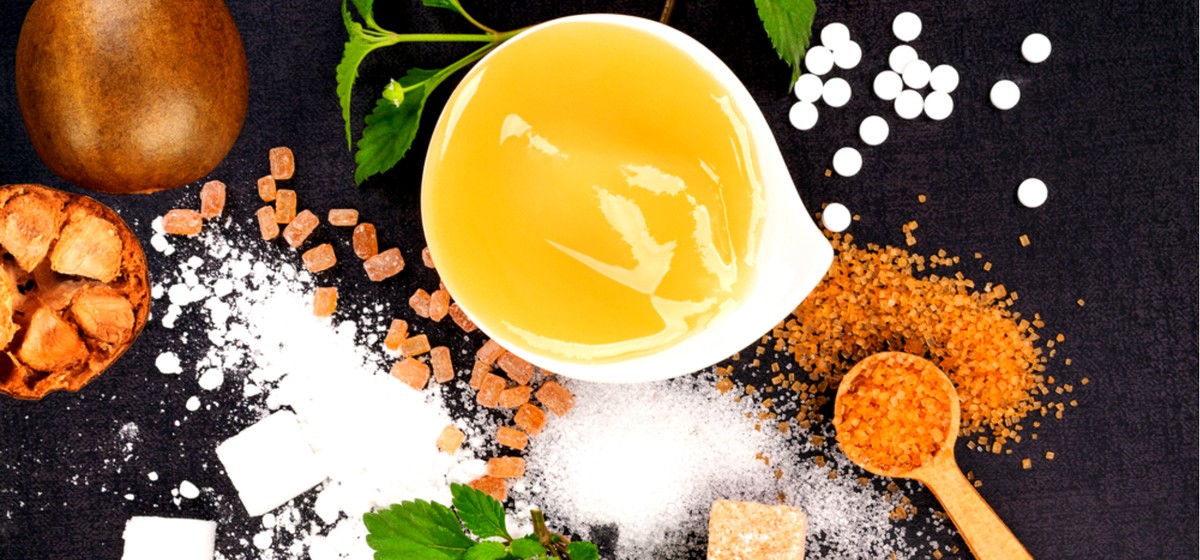Your Only Guide to Baking Cookies with Gluten Free Flour




Who doesn't love a good homemade cookie? Soft, chewy, and delicious. Chocolate chip, snickerdoodles, sugar, ginger, vanilla, peanut butter, and many other flavors. It's probably the most universally beloved dessert in existence.
You probably heard that baking is a science, and baking gluten-free is even more so. Don't get scared or discouraged, though. You will find all the information you need to master gluten-free baking skills for the best homemade cookies right here.
This article will answer your questions on:
No gluten - no problem!
What is gluten-free flour really? It's not an easy question to answer.
There are many options available on the market to make a gluten-free diet easy and sustainable. These special flours and flour blends are made from ground nuts, seeds, grains, fruits, and even insects (ask Joy Nemerson). They all have unique properties and tastes, but not all are great for baking, especially cookies.
For the same reason, you can't simply swap the regular all-purpose flour for any gluten-free kind at a ratio of 1:1 in your favorite recipe and get the same delicious end product. So let's see what are our best options for baking here.
In addition to being gluten-free, almond flour is also popular among paleo subscribers, low-carb dieters, and the keto crowd. It is one of the most known and respected flour substitutes, and it's basically just finely ground almonds.
It is also one of your most perfect options for baked goods, and cookies in particular. Almond meal contains just the right amount of oil that non-nut flours can't provide and makes cookies rich, moist, and nutty.
It is used a lot in keto-friendly bake recipes and is almost always added to gluten-free flour blends as well. It adds structure, as well as moisture you need to have a good chewy cookie. It also gives you a nice nutty crunch and some natural sweetness.
On top of that, almonds are a great source of protein (hence the love from the Keto folks), contain significant amounts of healthy mono-unsaturated fat, fiber, Vitamins B and E. So technically, eating cookies made with almond flour is beneficial to your overall health!
With all the fantastic benefits, you can't just swap regular all-purpose flour for almond and expect the same results. Luckily many gluten-free cookie recipes have already been created for you. Try some of our favorite recipes:
Nowadays, almond flour is available in almost every store. But as it is ground almonds, you can easily DIY it in the comfort of your kitchen using a food processor. Check out this step-by-step DIY Almond Flour guide right here.
There are many conversion charts for baking, but universal conversion charts for nut flours are hard to find. What might work in one recipe might not work in another. Each recipe you would like to convert would require some experimentation. As we aim for cookie dough consistency, you can use a 1:2 general conversion ratio and add a bit more if needed.

NOTE: You will have to add a binding agent to your recipe as well. Eggs or egg whites can work. If the original recipe called for one egg, try adding an extra one if using almond flour.
Meet another rock star of keto-friendly, gluten-free, low-carb, and paleo communities. Coconut flour sure does deserve all the praise it gets. It's packed with protein, good fats (have you heard about MCT magic), and fiber; it has a rich texture and natural sweetness, making it perfect for baking.
Another perk of using it in baking is that you won't need much of it. Coconut flour is highly absorbent and can also be a great thickening agent for soups and sauces.
It has a bit of a coconutty taste, so if you're not a fan, you might want to stick to other gluten-free options.
This flour is very dry and 'thirsty'; it absorbs a lot of liquid, and for that reason, needs a lot of adjustments to achieve the best results. It is also best to use it together with other flours like almond, for instance. You will notice while it might not be the main ingredient in many recipes, it's often used in small quantities. That way, you will achieve that incredible tender crumb and not make your cookies too dry or grainy. Adjusting your favorite recipes to coconut flour might be a bit tricky, so try these first:
In general, you will need only half the amount of flour the recipe calls for if you use coconut flour. But don't swap the whole amount for coconut. It requires additional protein in the mix. You could mix it with gluten-free oat flour or add a few tablespoons into a rice flour recipe.
Not only does it need extra binding protein, but also a lot of extra liquids. So double the number of eggs, or add one extra if you only use it for partial substitution. Add more milk, apple cider vinegar, juice, etc. Fruit purees also mix with coconut flour really well. Once you bake gluten-free desserts a few times, don't be afraid to experiment and find the best combination for you.

Even if you are absolutely new to gluten-free baking, you must have seen how many brands offer this type of flour these days. And a lot of the recipes call precisely for that kind. Most of them promise a 1:1 ratio for substitution with very few tweaks if needed. So what do we have to know about that?
As we are specifically focusing on baking cookies, the ingredients in all-purpose flour are very important. Most gluten-free blends are made from a mix of flours and binders (we will look into those in a minute).
Most flour blends would include tapioca and sorghum flours, both smooth in texture and neutral in taste. The common difference would be the extra mix-ins - some use beans (like garbanzo beans, fava beans, etc.) while others use sweet white rice or brown rice flour.
All-purpose gluten-free blends that use beans are great for savory baked goods and chocolate-flavored desserts. But the taste of beans might be too overpowering when it comes to cakes and cookies, especially if you like to taste your cookie dough before baking.
So look for flour blends using rice flours as a part of the blend.

Binders are the so-called gluten replacements that help with elasticity, texture and make sure your bake doesn't fall apart. Let's look at the most popular ones you would often see in baking recipes.
One of the most incredible things about baking gluten-free is all the possibilities to try new things and experiment with ingredients. Dive in and mix your own blend once you feel confident enough and have some extra time on your hands. And adjust as you go.
The rule of thumb here would be using a balanced mix of protein-rich flours, starch, and whole grains for your base, adding the necessary binders to achieve the right texture. Each type of flour adds something unique to the blend. For example, oat flour adds smooth texture and creaminess, almond flour (and other nut flours) brings moisture and makes your cakes and cookies taste even better with time, buckwheat, soy, or bean kinds create great texture but might be too overpowering when it comes to taste.
If this seems too scientific, let's break it down into some visually pleasant infographics to better illustrate the DIY process for your own all-purpose gluten-free flour blend.



To Sum Up:
You can make your own Rice Flour as well.
If you want to use sugar alternatives, you should choose those suitable for baking and not affected by high temperatures. You can use either natural sugar substitutes or zero-calorie sweeteners if you want your baked goods to stay low-cal, low-carb, and keto-friendly.

Maple Syrup:
Maple syrup is an amazing sugar alternative for baking. Not only is it flavorful, but it is also loaded with vitamins and minerals. It will help your bake retain moisture and make the structure chewy and rich.
If baking with maple syrup, use about 3/4 cup of syrup for 1 cup of sugar the recipe calls for. Also, reduce the baking temperature a little bit, as it will make your cookies brown a bit faster.
Molasses:
Dark molasses has a very distinct rich flavor perfect for cookies. It also contains high levels of calcium, iron, and potassium the regular sugar is stripped of.
Use 1 1/3 cup of molasses to replace 1 cup of sugar. And reduce the baking temperature by several degrees.
Date Sugar:
Date sugar is slightly lower in calories and contains some traces of vitamins and minerals. It is basically dried dates ground into a fine powder, so don’t go for this option if you're not a fan of dates.
You can use the ratio of 1:1 with this sweetener.
Coconut Sugar:
Coconut sugar has a bit of a nutty flavor to it and is a great alternative when the recipe calls for brown sugar.
It can substitute sugar cup for cup, but make sure to add a bit more liquid to your bake, so it doesn't turn out dry.
Stevia:
It is a calorie-free stable sweetener suitable for baking. It is incredibly sweet and can turn your baked goods bitter if overused. It is approximately 200-300 times sweeter than regular sugar, so use it carefully.
Use one teaspoon of stevia for every cup of sugar.
Monk Fruit Sweetener:
Probably the healthiest option when it comes to zero-calorie sugar alternatives. It is
packed with antioxidants proved to have anti-cancer properties. Monk fruit crystals are heat-stable, making them perfect for baking.
Use 1/2 cup of monk fruit crystals for every cup of sugar.
Erythritol:
Another good option for keeping your sweet desserts low-cal. Erythritol is heat-stable and has a neutral sweet flavor. It's almost 200 times sweeter than sugar, so use it carefully.
As tempting as making low-cal and low-carb cookies or cakes is, don't overdo it and stick with natural sugar alternatives when possible.

We are going to leave you with more gluten-free cookie recipes to practice and enjoy: